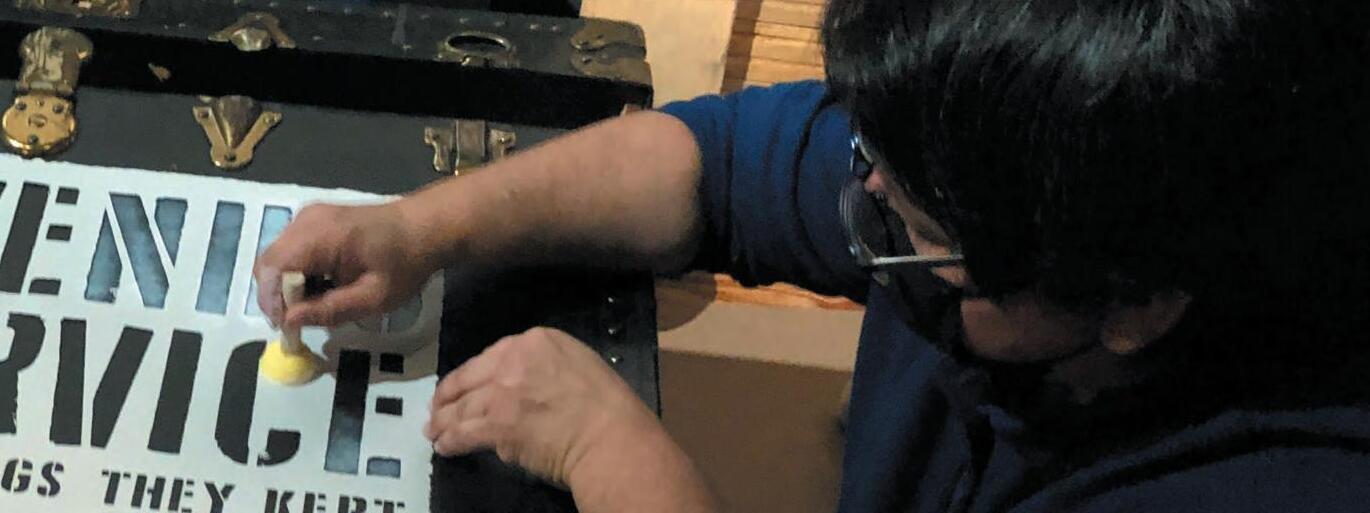
8 minute read
ind The HISTORY
ment of the Exhibit Souvenirs of Service: The Things They Kept
categories, such as objects picked from the battlefield or pillow shams collected during World War I? Or could the exhibit be developed around objects that had deep meaning to a person and sharing that story from across eras, branches of service, and relationships? Ultimately, the staff chose not to display objects as categories, but rather made the effort to share the humanity behind the history where the viewer could connect objects on display with memories of their own.
Advertisement
idea, in 2019 Curator of History Kevin Hampton began by asking the staff what they wanted to talk about and posed the question, "What is a souvenir?" To get people thinking they also asked that question of guests during museum programming.
There was much debate among the staff before the souvenir idea solidified. Do they choose artifacts to display based on
Picking the actual artifacts resulted from the brainstorming sessions, many at the State Archive Preservation Facility (SAPF), where most of the museum collection moved from the museum building in 2018 and is now stored. This exhibit was the first for which three of the staff central to exhibit planning worked off-site at the SAPF with the museum collection, which brought new challenges for logistics and communication. Throw in a new museum director who began during the planning, and the disruption of Covid-19 dispersions, and the entire process threw challenges at the staff beyond anything they’d previously encountered.
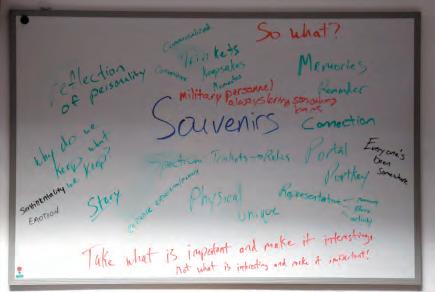
How To Decide
The resulting exhibition melded those pre-existing lists with personal experience of staff to cast the look of the present exhibit. Once the idea of what a souvenir is was determined, Archivist Russ Horton, Collections Manager Andrea Hoffman, and Processing Archivist Brittany Strobel were charged with creating suggestions for potential objects and stories to include and presenting them to the interpretive team. Each subject matter expert considered objects that had been on their minds to represent our veterans’ stories.
As the collections manager, Andrea Hoffman works directly with the physical objects that the museum holds from covers to boots, arms to pillow shams, and any non-paper objects in between. In recommending artifacts for the exhibit, Hoffman sought to take the idea of the trite, mass-produced souvenir and turn it on its head.
She explains her passion for the artifacts she cares for:
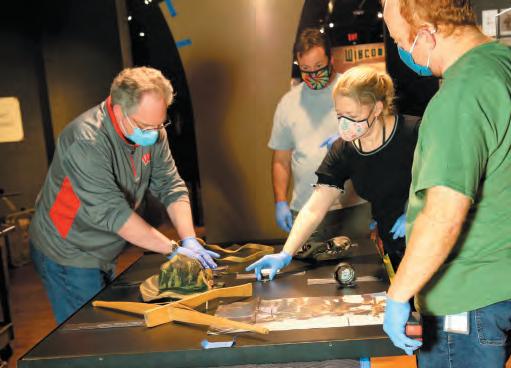
“The Wisconsin Veterans Museum is not like an art museum. The value of the artifacts cannot be enumerated; the beauty cannot be judged aesthetically. I wanted them (guests) to look at an object that was unexciting or mundane and show that all the interest in it is in the story behind it. These objects have worth because of the story they tell.”
One such mundane object, a rusted compass needle, will go on view in 2022.
Alone, the needle looks worthless, but it meant freedom for the escapee of a WWII POW camp who used it to navigate to safety. Ultimately, Hoffman tried to challenge the idea of what’s significant.
“Why we save the things we do and why what we do here is important. It’s our job to ensure these stories are heard.”
Prior to Russ Horton’s current duties as reference archivist, he worked with the collection objects, and so he knew the collection stories well. From his viewpoint, sharing the story of a pair of beaded buckskin trousers given by Bill Cody to Charles King illustrated one of the reasons why we keep things. Horton explains, “King valued these trousers because they were the last physical connection he had to a close friend. They are a souvenir of friendship.”
This exhibit gave the archives the opportunity to be a featured part as a main component. This concept challenges the staff and the visitor to think beyond the souvenir as a trinket. Now, a photograph at the Sphinx, a telegram saved from the day after Pearl Harbor, and the selfie are souvenirs of memory.
As the processing archivist, Brittany Strobel handles all things paper from photographs and letters home to newspapers and scrapbooks.
From her perspective, “Anything that survives to get to me is a souvenir. Anything that lasted long enough to be donated to this museum, I could make an argument for, which I did, and that’s why there are reproductions of photographs and scrapbooks in this exhibit. These are souvenirs.”
To begin her work, Strobel inherited a list, but also searched “souvenir” in the database as she combed the museum collection for the deeper story. Some of the photos she found were good filler for the exterior of the room to enhance a narrative. For example, the POW coat on view is given context with recently acquired photographs of POWs wearing coats. Other archival materials are related to objects in the collection and add depth to the story, like the “Happy Landings Doll” from Harold C. Brown that he kept with him as a good luck charm. The archives added to the display his photo and a letter to his mother with his reflection on the war.
Once the planning group decided that the veteran’s story was the single most important criterion for exhibiting an object, and lists were compiled, the logistical work to safely display an object or archival material factored into what went on view. The list went to Registrar Sarah Kapellusch to review for condition and suitability for exhibition. Very few of the chosen objects were eliminated because of concern over fragility. Others, like the World War I mandolin, went to a conservator for repair which included removal of adhesive, resetting loose inlays, and repositioning a string, all to ensure the instrument would remain healthy during the exhibit.
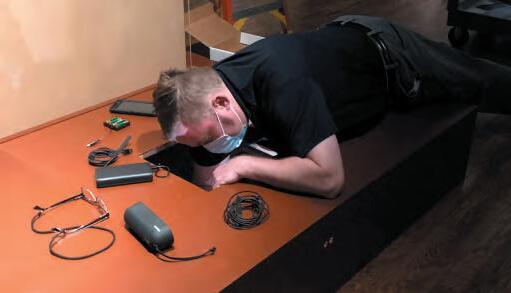
For some archival materials, the staff had to work out how to safely display them for an exhibit that will be open all of 2022. The telegram dated December 9, 1941 that Rhoda Ziesler sent home to her family in Manitowoc from Hawaii is too fragile to display for the entire exhibit due to light levels, and yet it is central to the story of the nurse who served during the attack on Pearl Harbor. The staff created the reproduction that is on view. In total, Curator of Veteran Art Yvette Pino and Marketing Specialist Jen Stevenson laid out reproductions of more than 200 photos and documents from the collection to line the walls of the exhibit gallery.
Beyond archival materials enhancing the stories of the objects, the archivists in the oral history area sprinkled their own magic into the Souvenirs mix. Throughout the gallery, Oral Historian Luke Sprague added voice recordings to displays to layer another dimension to the stories. Guests can hear the veteran’s memories about
As from to
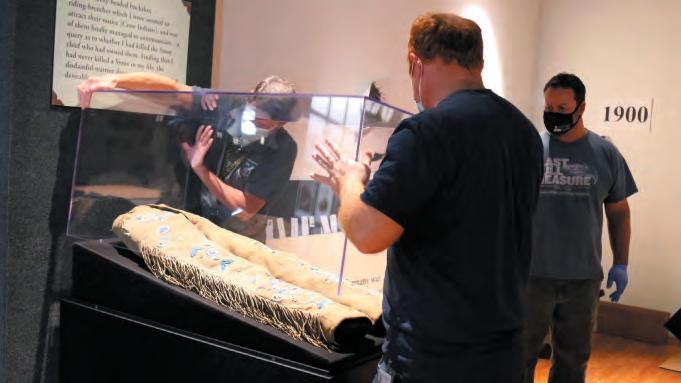
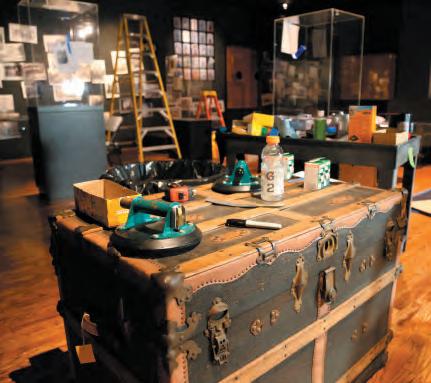
(and the artifacts in their own voices; the oral history becomes a souvenir as well.
From Trinkets To Relics
A discussion of the best way to organize the gallery for the Souvenirs of Service exhibit, ran concurrent with choosing the objects on view. Although the team was limited by physical space and display cases, preparing content relevant to the viewer remained paramount. As the staff embraced the definition of a souvenir as something that triggers a memory, the exhibit layout was planned around the idea walking through a grandparent’s attic hearing the stories of the family heirlooms.
The cases are intentionally set at varying heights and facing different directions to elicit a feeling of meandering through a memory for the viewer. Outside walls of the exhibit show souvenirs we would expect—the things one would find in a gift shop. On the interior floor space guests will notice one object in each case is illuminated and that is all. The lighting is meant subconsciously to signal to the visitor “this is important.” These are the well-documented, meaningful stories where the interpretation is meant to bridge the military-civilian divide and compel the visitor to want to know the person behind the story—something they cannot find through Google.
Hampton explains, “That’s why the title is important-Souvenirs of Service: The Things They Kept. Some things are important just because they survived. All of us can consider the point when something we have elevates from a trinket with no value to a relic that is almost holy to you because it is the last physical connection you have to a person. The more time passes the more that relic nature evolves, especially as the story reveals itself to us. And that’s what we at the museum are charged to do, preserve the treasured stories of our veterans for future generations”
Souvenirs of Service: The Things They Kept will remain on view through 2022.

Store.WisVetsMuseum.com

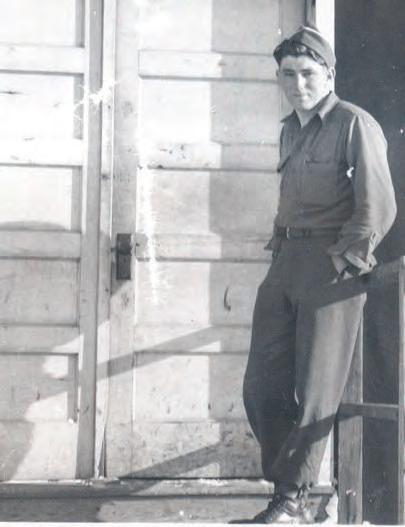

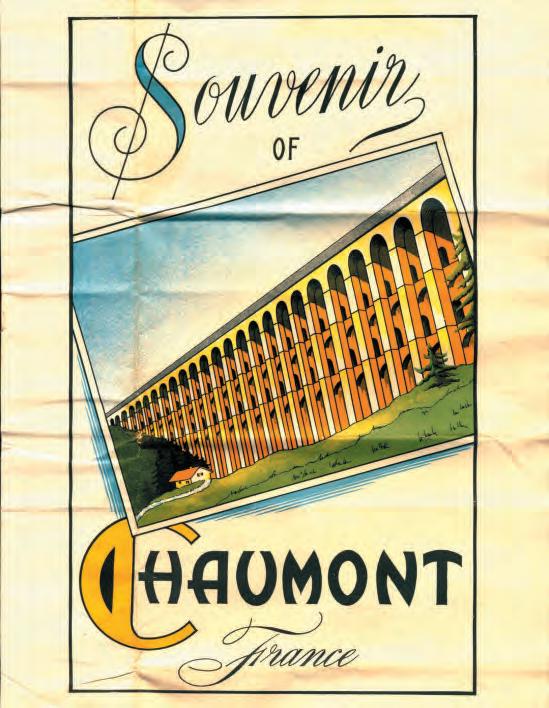
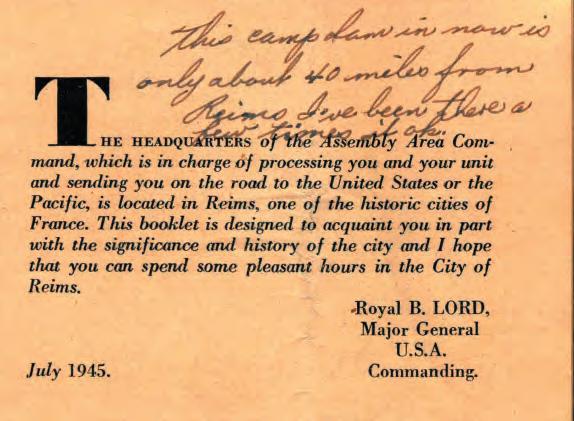
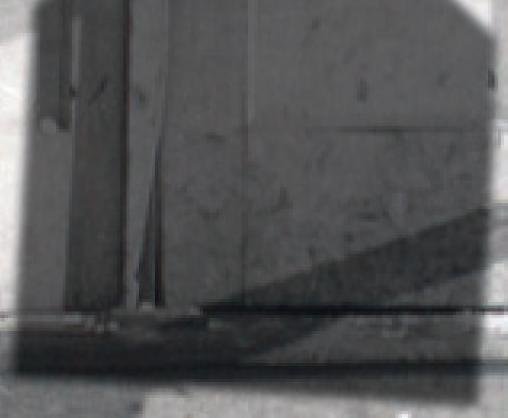
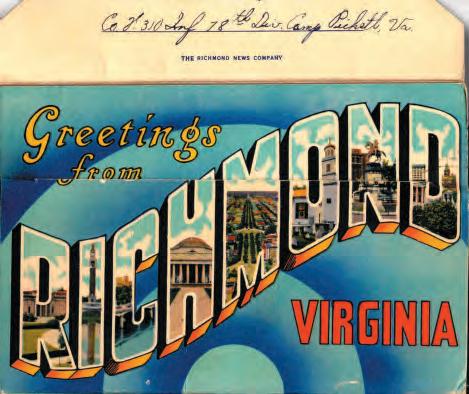
By: Russ Horton Reference Archivist
Earl Ganzow, a Fort Atkinson, Wisconsin native, traveled far from his home state while serving in the Army during World War II. Initially training in places like Virginia, Tennessee, and North Carolina, he deployed to Europe and served in the countries of England, France, Belgium, and Germany. Like many American soldiers, Ganzow collected souvenirs during his service that both documented the places in which he served and allowed him to share his experiences with his family back home.
The Wisconsin Veterans Museum has hundreds of letters that Ganzow wrote to his wife, Marian, during his World War II service, some of which describe collecting souvenirs and sending them home. Our museum also has many of the souvenirs that he sent home. All that combines to provide a very interesting and personal look at souvenir collecting in the military through the eyes of Earl Ganzow.
Postcards, travel guides, and other place specific items helped Ganzow show his wife and family some of the places he visited. A postcard set from Richmond, Virginia that contains color images of prominent buildings and other sites in the city is a good example of this type of souvenir. After he deployed to Europe, Ganzow collected and sent home a travel guide from Chaumont, France and picture postcards from Liege, Belgium. After the war ended and he was preparing to return to the States, he noted on an official Army guide to Reims, France that he had been in the city, and it was “OK.”
Ganzow occasionally purchased souvenirs for his wife or a family member.
On November 14, 1944, he wrote to Marian, “And darling I even pick[ed] you up a nice little souvenir, I am sending it tomorrow morning, it’s from Belgium. Can’t tell you what it is, but any way I hope you’ll like it.”
Unfortunately, this souvenir gift remains a mystery and is not in the museum’s collection.
He also wrote about another type of souvenir, not tied to a place or as a gift for a specific person, but to commemorate the experience of fighting in a war and defeating an enemy. On October 28, 1944, he wrote
“I have a few souvenirs to send home as soon as I can get them packed. We took over a few pill boxes and I found a few things that the Gerries left behind there.”
The museum’s collection has many of these souvenirs that Ganzow sent home, such as German pins, badges, belt buckles, and currency. WVM also has a larger item that he mentioned specifically in a December 7, 1944 letter.
“Say, did you ever get that sword I sent home? That was taken from a pill box we took over in Germany here. I hope you get that alright, too.”
The Earl Ganzow collection, both letters and objects, provide an interesting insight into souvenir collecting in World War II. Learn more about souvenirs that other Wisconsin veterans collected, from the Civil War to the present, by visiting the museum to see Souvenirs of Service: The Things They Kept.






